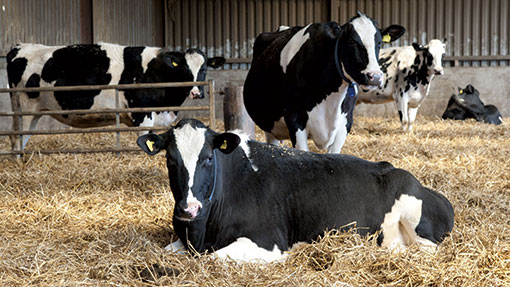How to reduce your bedding costs

When it comes to buying bedding, investing in quality is key, writes Dr Jenny Gibbons, DairyCo’s research and development manager.
Bedding accounts for, on average, 2% of total costs of production on a pence-a-litre basis, according to DairyCo’s MilkBench analysis.
Whatever bedding you opt for in straw yards or cubicles, don’t skimp on how much you use – there is no point in using poor-quality material. It may be cheap but, in the long run, it will be twice as expensive in terms of problems.
Comfortable cows will produce more milk. If you can achieve an extra one to two litres a cow a day across your herd by improving cow comfort, then that’s an opportunity not to be missed.
There are several areas that farmers can focus on to improve their bedding security:
- Be timely. Approach vendors as early as possible. For example, with straw, contact growers in winter/spring for autumn delivery. A “just in time” strategy is vulnerable in winter.
- Calculate your requirements using the information in the table below.
- Agree collection/delivery dates as far in advance as possible and stick to those dates.
|
Bedding type |
Typical costs (£/t) |
Weekly use (£/cow/week) |
Costs (kg/cow/winter) |
Total use (kg/cow/week) 180-day winter |
|
Sand (deep bedded) |
13-15 |
112 |
1.40-2.00 |
2,880 |
|
Straw (bedded yard) |
60-70 |
140 |
8.40-9.80 |
3,600 |
|
Straw (chopped) |
60-70 |
18 |
1.20-1.40 |
450 |
|
Sawdust (kiln dried) |
140 |
7.0 |
0.98 |
180 |
|
Paper-based material |
90 |
15 |
1.35 |
396 |
Bedding must be comfortable, clean and dry, to limit exposure to disease-causing bugs.
Don’t forget about the bedding needs of your calves. A deep bed of straw that calves can nestle into will help them preserve body heat and grow more efficiently.
